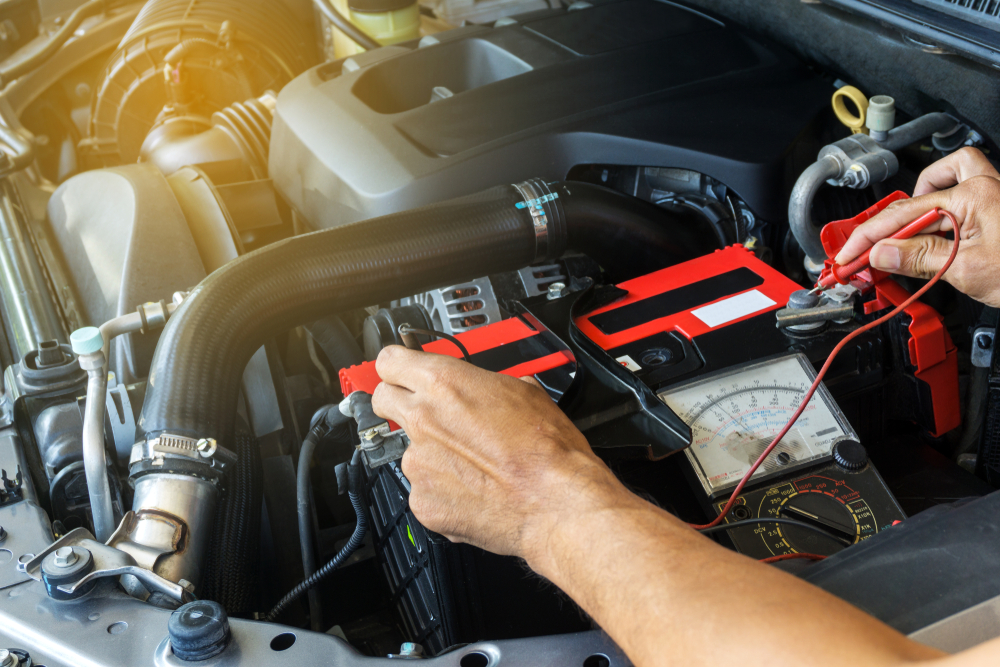When winter hits, many drivers rely on advice that’s been passed down for years—only to discover that some of it is completely wrong. From the effectiveness of old tricks to myths about car maintenance, believing these winter driving misconceptions can put you at risk. In this article, we’re busting 15 of the most common winter driving myths so you can stay safe and confident behind the wheel this season.
Contents
All-Wheel Drive (AWD) Makes Your Car Invincible in Snow

- Reality: AWD helps with traction, but it doesn’t improve braking or steering control. Even with AWD, your car can slide on icy roads. Winter tires are essential for better performance in snow and ice.
You Don’t Need Winter Tires if Your Car Has AWD

- Reality: While AWD improves traction, it doesn’t help with stopping distances on snow and ice. Winter tires are designed with special tread patterns and rubber compounds that offer better grip in cold temperatures.
You Can Drive the Same Speed in Snow as You Do on Dry Roads

- Reality: Reduced visibility, slick roads, and longer stopping distances mean driving at lower speeds is crucial. Adjust your speed to the road conditions, not the posted speed limit.
Using Cruise Control is Safe in Snow

- Reality: Cruise control can lead to loss of control on slippery roads because it doesn’t adjust for the changing road conditions. It’s best to drive manually and stay in control at all times.
Four-Wheel Drive (4WD) Means You Can Drive Anywhere in Snow

- Reality: Like AWD, 4WD improves traction but doesn’t make your vehicle immune to sliding or getting stuck in deep snow. Also, 4WD vehicles often have heavier weight, which can make handling more difficult.
Salt Will Ruin Your Car’s Paint and Finish

- Reality: While salt can cause corrosion over time, modern cars are designed to withstand the effects of road salt. Regular washes, especially after heavy snow, can help prevent damage.
It’s Okay to Warm Up Your Car for Long Periods Before Driving

- Reality: Modern vehicles don’t require extended idling in winter. Warming up for a few minutes is enough. Long idling wastes fuel and contributes to unnecessary engine wear.
If Your Car Starts, It’s Safe to Drive

- Reality: Just because the engine runs doesn’t mean your car is ready for winter conditions. Check that the battery is fully charged, tires are properly inflated, and you have enough antifreeze before hitting the road.
Snow Chains Are Necessary for All Winter Driving

- Reality: Snow chains are only required in extreme snow or ice conditions. Winter tires are generally sufficient for most winter driving situations, and chains are difficult to install and remove.
Your Car’s Heater Will Keep the Windshield Clear

- Reality: The heater can help, but you’ll need defrosting systems and a good windshield scraper to clear the glass properly. If the outside temperature is below freezing, the heater alone won’t do the job.
Cold Weather Isn’t Hard on Your Car’s Battery

- Reality: Cold temperatures can reduce a battery’s efficiency and ability to start your car. If your battery is already weak, winter weather can cause it to fail. It’s a good idea to check the battery’s health before winter.
You Don’t Need to Worry About Your Tires in the Winter

- Reality: Winter tires are designed specifically to perform better in cold, wet, or icy conditions. Summer and all-season tires harden in the cold, reducing their grip, which can be dangerous.
Snow Tires Aren’t Necessary for Cities with Mild Winters

- Reality: Even in cities with mild winters, winter tires improve braking and handling on cold pavement, even if there’s no snow. Temperatures below 45°F (7°C) are enough to justify their use.
You Should Drive with Your High Beams on in Snowstorms

- Reality: High beams reflect off snowflakes and reduce visibility in heavy snowstorms. Use low beams for better vision in poor conditions.
All-Wheel Drive Prevents Your Car from Getting Stuck

- Reality: AWD may help get you moving in deep snow, but it won’t necessarily get you out if you’re stuck. Carrying a shovel and knowing how to handle a stuck car is important.
This article originally appeared in MyCarMakesNoise.
More from MyCarMakesNoise
18 Milestones in the Evolution of Global High-Speed Rail System

High-speed rail systems have revolutionized transportation around the world, offering faster, more efficient, and environmentally friendly travel options. From Japan’s pioneering Shinkansen to China’s expansive CRH network, these developments highlight remarkable advancements in rail technology and infrastructure. Read More
13 Things That Could Go Wrong with Off-Lease Vehicle Purchases

Buying an off-lease vehicle can seem like a great deal, offering newer models at lower prices. However, there are several potential drawbacks to consider before making your purchase. Read More
15 Reliable Honda Cars That Prove Quality Can Be Affordable

Honda is renowned for producing reliable cars that offer great value for money. In this article, we will explore 15 of Honda’s most dependable models and how they contribute to affordability. Read More














